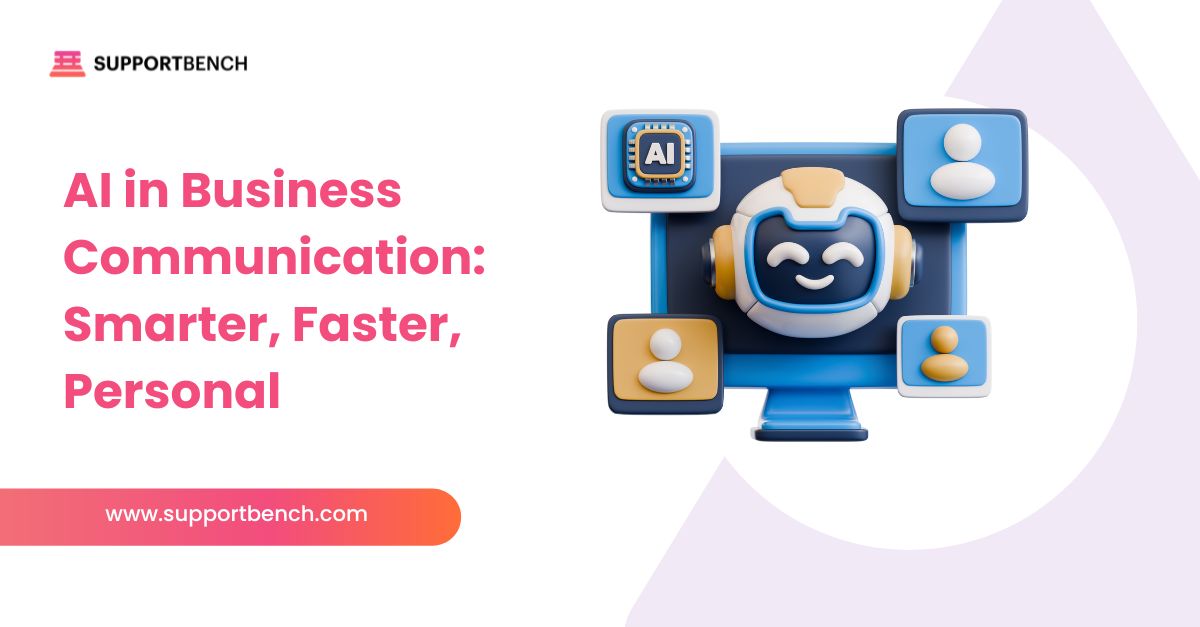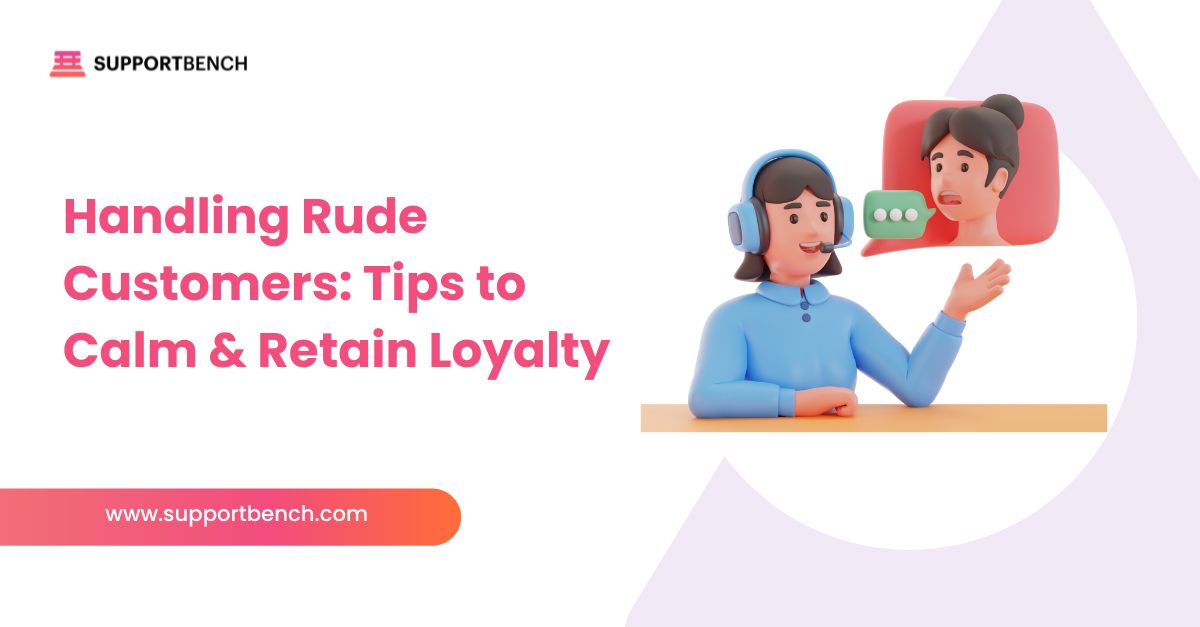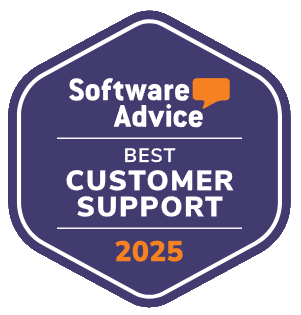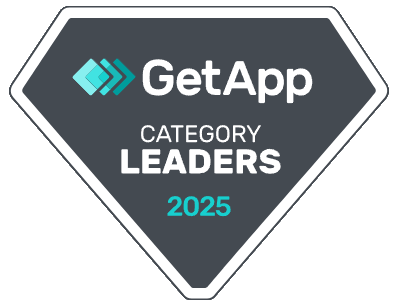You’ve stepped into a pivotal position, one that directly influences customer satisfaction, retention, and overall brand perception. As you embark on your first 90 days, armed with insights from your initial customer support team audit, one of your most powerful tools for navigating this new landscape and driving meaningful change will be data. Specifically, the Key Performance Indicators (KPIs) you choose to track will serve as your compass, guiding your decisions, highlighting successes, and illuminating areas needing attention.
But in a world awash with potential data points, which metrics truly matter for a new leader looking to make an impact, especially in a B2B environment? It’s easy to get overwhelmed or, conversely, to focus too narrowly on just one or two numbers. The key is to establish a balanced scorecard that gives you a holistic view of your support operation’s health and effectiveness.
This guide will walk you through the top metrics every new Head of Support should track. We’ll explore why they’re important, what they tell you, and how they can help you achieve the transformative goals outlined in The Ultimate Customer Support Playbook for New Managers. Think of this as your foundational metrics toolkit for building a high-performing, data-driven B2B customer support organization.
At a Glance:
- Establish Your Baseline & Drive Change: For new Heads of Support, tracking the right metrics from day one is crucial to understand current performance, identify improvement areas, demonstrate impact, and make data-driven decisions for your B2B team.
- Focus on a Balanced Scorecard: Don't get lost in a sea of data. Prioritize a balanced set of Key Performance Indicators (KPIs) spanning customer experience (CSAT, NPS, CES), operational efficiency (FRT, AHT, ART, Backlog), and resolution quality (FCR, Escalation Rate).
- B2B Metrics Have Nuances: While core metrics are universal, B2B support requires a specific lens. Consider account-level satisfaction, SLA adherence per contract, and the business impact of issues when interpreting your data.
- Beyond Numbers – Seek Context & Action: Metrics are signals, not the full story. Dig into the "why" behind the numbers, gather qualitative feedback, and use insights to drive targeted improvements in processes, training, or technology.
- Leverage Technology for Metric Mastery: Modern helpdesk platforms, especially those designed for B2B with AI capabilities like Supportbench, can automate tracking, provide deeper insights (e.g., predictive CSAT, AI-detected FCR), and offer customizable dashboards to visualize your team's progress effectively.
The “Why”: The Purpose of Tracking Metrics as a New Leader
Before diving into specific KPIs, let’s be clear on why this is so critical, particularly in your early days:
- Establish a Baseline: You can’t measure improvement if you don’t know where you started. Your initial metrics will form the baseline against which all future progress is judged.
- Identify Strengths and Weaknesses: Metrics quickly highlight what’s working well and where the most pressing issues lie, helping you prioritize your efforts.
- Inform Quick Wins: Early data can point to low-hanging fruit – areas where targeted action can yield rapid, visible improvements, building credibility with your team and leadership.
- Guide Strategic Decisions: As you move beyond quick wins, metrics will inform your decisions about process changes, training needs, technology investments, and staffing.
- Demonstrate Impact & ROI: To gain buy-in for your initiatives and showcase the value of your department, you need to speak the language of data. Quantifiable results resonate with executive leadership.
- Drive Team Accountability & Motivation: Transparently sharing relevant metrics with your team can foster a sense of ownership, drive accountability, and motivate them towards common goals.
- Understand the Customer Experience: Ultimately, many metrics are indicators of how easy and effective it is for customers to get the help they need.
Now, let’s break down the essential categories and specific metrics within them.
Category 1: The Voice of Your Customer (Customer Experience Metrics)
These metrics directly reflect how your customers perceive their interactions with your support team. For B2B, where relationships are long-term and high-value, understanding and improving these is paramount.
1. Customer Satisfaction (CSAT)
- What it is: CSAT measures how satisfied customers are with a specific support interaction or experience. It’s typically measured by asking a question like, “How satisfied were you with the support you received today?” on a scale (e.g., 1-5, Very Dissatisfied to Very Satisfied).
- Why it matters for new leaders: It’s a direct pulse on transactional quality. Low CSAT scores can pinpoint issues with agent skills, processes, or resolution quality for specific types of interactions. Improving CSAT is often a tangible quick win.
- How to track it: Usually via post-interaction surveys sent automatically after a ticket is resolved.
- What to look for: Overall CSAT score, trends over time, CSAT by agent, by channel, by issue type, or by customer segment (especially important for B2B to see if key accounts are satisfied). Don’t just look at the score; dive into the verbatim comments – they contain the gold.
- Supportbench Angle: Platforms like Supportbench allow you to easily send CSAT surveys and link results directly to cases and scorecards. Furthermore, its AI Predictive CSAT can give you an early warning signal within the case list if a customer is likely to be dissatisfied, enabling proactive intervention even before a survey is sent.
2. Net Promoter Score (NPS)
- What it is: NPS measures overall customer loyalty and willingness to recommend your company/product. It asks, “On a scale of 0-10, how likely are you to recommend [Your Company/Product] to a friend or colleague?” Responses are categorized into Promoters (9-10), Passives (7-8), and Detractors (0-6). NPS = % Promoters – % Detractors.
- Why it matters for new leaders: While support is just one factor influencing NPS, it plays a significant role. Tracking NPS (if your company does) and understanding how support interactions contribute can highlight support’s strategic impact on customer loyalty and growth.
- How to track it: Typically through periodic relationship surveys, not usually after every interaction.
- What to look for: The overall NPS score, trends, and the reasons Detractors give for their score (which often relate to support experiences or unresolved product issues that surface through support).
- B2B Context: In B2B, NPS might be tracked at an account level. Consistent negative feedback from key accounts is a major red flag.
3. Customer Effort Score (CES)
- What it is: CES measures how much effort a customer had to expend to get their issue resolved. It typically asks, “To what extent do you agree or disagree with the following statement: The company made it easy for me to handle my issue?” on a scale (e.g., Strongly Disagree to Strongly Agree).
- Why it matters for new leaders: High effort is a major driver of customer disloyalty. If customers have to jump through hoops, repeat information, or switch channels multiple times, their effort is high, and satisfaction plummets. CES can pinpoint friction in your processes.
- How to track it: Often via post-interaction surveys, similar to CSAT.
- What to look for: Scores indicating high effort (lower scores on an “easy” scale, or higher on a “difficult” scale). Analyze comments to understand why an interaction was difficult. Was it a complex issue, a process flaw, or an agent knowledge gap?
- Supportbench Angle: Similar to CSAT, Supportbench facilitates CES surveys and integrates results. Its AI Predictive CES can also provide an early indication of interactions perceived as difficult by the customer, allowing for timely follow-up.

Category 2: Operational Excellence (Efficiency & Responsiveness Metrics)
These metrics focus on how quickly and efficiently your team handles support requests. While speed isn’t everything (quality matters more), inefficiency can lead to backlogs, frustrated customers, and burnt-out agents.
4. First Response Time (FRT)
- What it is: The time elapsed between a customer submitting a ticket and an agent providing the first meaningful response (auto-replies don’t count for most definitions).
- Why it matters for new leaders: FRT is often the first impression a customer has of your support responsiveness. Long FRTs are a common source of frustration. Improving FRT can be a significant quick win.
- How to track it: Measured by your helpdesk system.
- What to look for: Average FRT, FRT by channel (email vs. chat), FRT by priority/severity, FRT by time of day/day of week. Are there specific bottlenecks?
- B2B Context: SLAs for FRT are often contractual in B2B. Meeting these is non-negotiable.
- Supportbench Angle: “Supportbench’s AI Automation can help by auto-prioritizing cases and its AI auto-responses can handle common queries instantly, directly impacting FRT for those cases. Dynamic SLAs ensure you’re meeting B2B commitments.”
- Internal Link Alert: For specific tactics, our guide on “How to Cut First Response Times Without Hiring More Agents” offers valuable insights.
5. Average Handle Time (AHT)
- What it is: The average duration of a single support interaction, including talk time, hold time, chat duration, and any wrap-up work an agent does related to that interaction before moving to the next.
- Why it matters for new leaders: AHT can be an indicator of agent efficiency, process complexity, or the availability of information. However, use AHT with extreme caution. Pressuring agents to reduce AHT without focusing on quality can lead to rushed, incomplete resolutions and lower CSAT.
- How to track it: Measured by your helpdesk/telephony/chat system.
- What to look for: Trends in AHT. If it’s consistently high, investigate why. Are agents struggling to find information? Are processes too convoluted? Is more training needed? Compare AHT for different issue types – complex issues will naturally take longer.
- Never use AHT as a primary performance metric in isolation. Balance it with CSAT and FCR.
6. Average Resolution Time (ART) / Time to Resolution (TTR)
- What it is: The total time taken from when a customer opens a ticket until it is marked as resolved.
- Why it matters for new leaders: ART reflects the overall efficiency of your entire resolution process. Long ART can indicate bottlenecks, inefficient escalations, or a lack of resources/knowledge.
- How to track it: Measured by your helpdesk system.
- What to look for: Average ART, ART by issue type/complexity, ART by priority, ART by customer segment. Are certain types of tickets taking disproportionately long to resolve?
- B2B Context: Contractual SLAs often dictate maximum resolution times for different severity levels in B2B.
7. Ticket Backlog (Size & Age)
- What it is: The number of unresolved tickets currently in your queue, and critically, how old those tickets are (ticket aging).
- Why it matters for new leaders: A growing backlog, especially with many old tickets, is a clear sign that demand is outstripping capacity or that there are significant inefficiencies. Tackling a large backlog is often a priority for new leaders.
- How to track it: Your helpdesk system should provide views of open tickets and their age.
- What to look for: Trends in total backlog size. Pay close attention to the distribution of ticket age (e.g., % of tickets older than 24hrs, 48hrs, 1 week).
- Goal: Keep the backlog manageable and prevent tickets from becoming excessively aged.

Category 3: Resolution & Quality (Effectiveness Metrics)
These metrics assess how effectively your team resolves customer issues and the quality of those resolutions.
8. First Contact Resolution (FCR) / First Call Resolution
- What it is: The percentage of tickets resolved by the support team during the very first interaction with the customer, without requiring follow-up or escalation.
- Why it matters for new leaders: FCR is a powerful metric. High FCR typically correlates with high CSAT, lower operational costs (fewer repeat contacts), and more efficient agents. It indicates that agents are knowledgeable and empowered.
- How to track it: This can be tricky. Some helpdesks have built-in logic, agents might self-report (less reliable), or you might use surveys (“Was your issue resolved on the first contact?”).
- What to look for: FCR rate, trends. If FCR is low, why? Are agents lacking knowledge? Do they need more authority? Are processes forcing multiple contacts?
- Supportbench Angle: This is where modern AI shines. “Supportbench’s AI First Contact Resolution (FCR) detection analyzes case history and communication patterns to identify FCR with much higher accuracy than traditional methods, taking the guesswork out of this crucial metric.”
9. Ticket Resolution Rate
- What it is: The percentage of tickets resolved by the support team compared to the total number of tickets received within a specific period. (Total Resolved Tickets / Total Received Tickets) * 100.
- Why it matters for new leaders: While seemingly straightforward, if this rate is consistently below 100% (excluding spam or clearly non-actionable items), it means your backlog is growing. It’s a basic indicator of whether your team is keeping up with demand.
- How to track it: Calculated from helpdesk data.
- What to look for: A rate consistently close to or above 100% (when accounting for backlog reduction). If it drops, investigate if it’s due to increased volume, reduced efficiency, or other factors.
10. Escalation Rate
- What it is: The percentage of tickets that need to be escalated from Tier 1 support (or the initial agent) to a higher tier, a specialized team, or management.
- Why it matters for new leaders: A high escalation rate can indicate issues with Tier 1 agent training, knowledge gaps, insufficient empowerment, or overly complex issues that frontline staff aren’t equipped to handle. Each escalation adds time and cost.
- How to track it: Tracked through your helpdesk’s escalation workflows.
- What to look for: Overall escalation rate, reasons for escalation, types of issues most frequently escalated.
- Internal Link Alert: Reducing unnecessary escalations often involves better processes. Learn more in “From Chaos to Clarity: How to Set Up an Escalation Management System.”
Category 4: Team Health & Productivity
While customer and operational metrics are key, don’t forget your team.
- Agent Satisfaction (eNPS or Internal Surveys): A happy, engaged team generally provides better support. Track agent morale through internal surveys or an employee Net Promoter Score.
- Agent Occupancy/Utilization (Use with care): Occupancy measures the percentage of time agents are actively engaged in support-related work versus available time. Utilization looks at productive time versus paid time. These can help with staffing but, like AHT, can be detrimental if pushed too hard without a focus on quality and well-being.
B2B Nuances for Key Metrics
While the core metrics above are broadly applicable, B2B support often requires a more nuanced interpretation and additional considerations:
- Account-Level Metrics: Instead of just individual CSAT, look at overall satisfaction trends for key B2B accounts. A single unhappy contact might be an anomaly, but consistent dissatisfaction across an account is a major risk.
- SLA Adherence (per Contract): B2B contracts often have specific SLAs for FRT, ART, and uptime. Tracking adherence to these contractual obligations is paramount. Your helpdesk should allow you to configure and monitor these. Supportbench’s dynamic SLAs are particularly useful here, allowing SLAs to be tailored based on client tiers or specific contractual terms.
- Business Impact of Issues: In B2B, the impact of an unresolved issue can be significant (e.g., system downtime affecting hundreds of users). While not a direct metric, your team needs to be able to prioritize based on business impact, and your reporting should reflect this.
- Complexity & Specialization: B2B issues can be highly complex and require specialized knowledge. Metrics like AHT or FCR need to be contextualized based on this complexity.
- Relationship Focus: B2B support is often about long-term relationships. Metrics should reflect the health of these relationships, not just transactional efficiency.
Key Customer Support Metrics Overview
| Metric | Why Use It | How to Measure It | What’s a “Bad” Metric Example | What’s a “Good” Metric Example |
| Customer Experience | ||||
| Customer Satisfaction (CSAT) | Gauges happiness with specific interactions. | Post-interaction surveys (e.g., 1-5 scale). | Low scores (e.g., <70-80%) | High scores (e.g., >90%) |
| Net Promoter Score (NPS) | Measures overall customer loyalty. | “Likely to recommend?” surveys (0-10 scale). | Negative or low positive score | High positive score (e.g., >50) |
| Customer Effort Score (CES) | Assesses ease of issue resolution. | “Was it easy to resolve?” surveys (e.g., 1-7 scale). | High effort reported | Low effort reported |
| Operational Efficiency | ||||
| First Response Time (FRT) | Indicates responsiveness to new queries. | Helpdesk: Time from ticket creation to first agent reply. | Hours/Days | Minutes/Low Hours |
| Average Handle Time (AHT) | Measures agent time per interaction. | Helpdesk/Telephony: Avg talk/chat + wrap-up time. | Consistently very high/low (w/o context) | Varies by issue type; stable |
| Average Resolution Time (ART) | Shows overall time to solve issues. | Helpdesk: Time from ticket creation to resolution. | Days/Weeks for simple issues | Hours/Few Days (contextual) |
| Ticket Backlog (Size & Age) | Reveals workload vs. capacity; aging issues. | Helpdesk: Count of open tickets & time since open. | Large, consistently growing; many old tickets | Stable/shrinking; few old tickets |
| Resolution & Quality | ||||
| First Contact Resolution (FCR) | Shows effectiveness of initial interaction. | Helpdesk analysis/Surveys; AI detection. | Low % (e.g., <60-70%) | High % (e.g., >80%) |
| Ticket Resolution Rate | Team’s ability to keep up with volume. | (Resolved Tickets / Received Tickets) x 100. | Consistently <100% (backlog grows) | Around/Above 100% (stable backlog) |
| Escalation Rate | Highlights Tier 1 knowledge/empowerment gaps. | Helpdesk: % tickets escalated to higher tiers. | High % (e.g., >15-20%) | Low % (e.g., <5-10%) |
| Team Health (Briefly) | ||||
| Agent Satisfaction (eNPS) | Gauges team morale & engagement. | Internal surveys (“Likely to recommend as workplace?”). | Negative or low eNPS | Positive, high eNPS |
Important Considerations for “Good” vs. “Bad”:
- Context is King: What’s “good” or “bad” can vary significantly by industry, company size, issue complexity, and B2B contractual agreements (SLAs). The examples above are general guidelines.
- Trends Over Time: A single data point is less important than the trend. Are metrics improving, stable, or declining?
- Balance: Don’t focus on one metric to the detriment of others (e.g., pushing AHT down so much that CSAT and FCR suffer).
- B2B Specifics: For B2B, always overlay these with SLA adherence per account and overall key account health.

Beyond the Numbers: Context and Actionability
Remember, metrics are a starting point, not the end-all. As a new leader:
- Seek Context: Always ask “why?” behind the numbers. A drop in CSAT isn’t just a statistic; it’s a signal to investigate underlying causes.
- Combine Quantitative with Qualitative: Pair your metrics with qualitative feedback from customer comments, agent 1:1s, and process reviews.
- Look for Trends, Not Just Snapshots: A single data point can be misleading. Focus on trends over time to understand patterns and the impact of your initiatives.
- Make Metrics Actionable: Each metric you track should potentially lead to an action. If you can’t do anything with the data, question why you’re tracking it.
- Share Wisely: Be transparent with your team about relevant metrics, explaining how they contribute to overall goals. Use data to celebrate successes and identify areas for collective improvement.
Leveraging Your Tech Stack for Metric Mastery
Your helpdesk platform should be your best friend when it comes to tracking and analyzing these KPIs. A modern system can:
- Automate Data Collection: Reducing manual effort and ensuring accuracy.
- Provide Customizable Dashboards: Allowing you to visualize the metrics that matter most to you and your stakeholders. Supportbench offers easy-to-use, customizable dashboards and KPI scorecards that new managers can set up without heavy IT involvement.
- Offer Drill-Down Capabilities: Letting you go from a high-level metric to the underlying data (e.g., specific tickets or agent performance).
- Integrate AI for Deeper Insights: As mentioned, platforms like Supportbench use AI to provide predictive analytics (CSAT/CES), more accurate FCR detection, and even AI-driven summaries that can indirectly improve efficiency metrics by helping agents get up to speed faster on cases.
- Support B2B Specifics: Track SLAs by company, manage custom data for B2B clients, and report on account-level performance.
If your current system makes it difficult to get the data you need, evaluating its suitability should be on your radar, as discussed in “Choosing the Right Customer Support Software for Your Growing B2B Team.”
Your Data-Driven Journey Starts Now
As a new Head of Support, embracing a data-driven approach from the outset will empower you to make informed decisions, drive meaningful improvements, and demonstrate the strategic value of your department. By focusing on this balanced set of top metrics, understanding their B2B nuances, and always seeking the context behind the numbers, you’ll be well-equipped to lead your team to new heights of customer satisfaction and operational excellence. This isn’t just about tracking numbers; it’s about understanding your story and intentionally writing the next chapter.















